Excellent keyword research uncovers the terms, phrases, questions, and answers that are important to your users and customers. Your keywords should also support business goals like getting more pageviews, capturing leads, or selling products and services.
To drive more truly qualified leads to your site, you’ll need to know how to do keyword research. Read on to learn more about how it works, why it’s important, and how it can help you craft content.
What Is Keyword Research?
Keyword research is the process of finding all possible search queries that may be relevant to your business and your customers. Keyword research includes finding, sorting, and prioritizing keywords, which can then inform your keyword strategy.
Why Keyword Research Is (Still) Important to SEO
Keyword research helps you:
Understand and reach your audience Find new relevant topics to cover on your site Get qualified leads Increase sales Improve ad campaigns, get clicks and impressions Build awareness of your brandThe right keywords can help draw in potential users that are more likely to use or purchase from your website, so it’s important to use them. However, it’s just as important to avoid using “wrong” keywords that can attract users that are likely to bounce away from your page. Keyword research helps you discover both.
Keyword research can also help you prioritize your keywords. If you have a small or new site and your competition on a particular search term are sites like Wikipedia and Amazon, ranking for that term might be a long-term goal or lower priority. At the same time, work on other more attainable keywords in the short term.
Understanding Keyword Themes
Some marketers may refer to groups of related keywords as topics or themes. These are often groups of individual keywords that signal a similar need or intent by a searcher.
Because a searcher might have several intents when researching (and searching) a specific topic, you should never boil down keyword research to just compiling a list of keywords.
Instead, you should use keyword research to build an intricate group of keywords that fall under a similar search intent.
A single topic or theme might lead to a piece of content that can answer all of the needs within that topic, and thus a single page is “optimized” for the entire group of keywords.
Or, the search topic may be broad enough to signal that you should have an entire section of your website with many pieces of content devoted to answering the user’s intent.
For example, if you’re writing a post about “how to fry an egg,” one single article might satisfy intent for all keywords around that “theme,” such as:
How to fry an egg How to cook a sunny side up egg How to cook an egg over medium How to fry an egg for a sandwich How to fry an egg in the microwave How to fry an egg over easy How to fry an egg over hard How to fry an egg over medium How to fry an egg sunny side up How to fry an egg with oil How to fry an egg without oilIf your keywords group covers a more complex topic like “what caused the decline and fall of the Roman Empire,” all possible search intent around that theme won’t be satisfied by a single piece of content. They would probably require a much larger content body to fully meet the user’s questions.
Keyword/Query Trends
Some SEO experts may argue that individual “head” keywords won’t matter as much in the future due to voice search. Voice search allows users to create long, natural language search queries.
But, that doesn’t mean that shorter “head” keywords can’t form the start or foundation of your keyword research. A simple head term can produce many long-tail keywords prospects, as there isn’t a separate database for voice search results.
Google, for example, returns essentially the same results for a voice query as it would a typed-out query. For many of these long long-tail queries, Google will parse out essential terms and return the results.
As an example, let’s search for “Hey Google, what are the best running shoes for a person who has flat feet?” Looking at Google search results, it is easy to see that Google returns nearly the same result set for that query as it does for “best running shoes flat feet.”
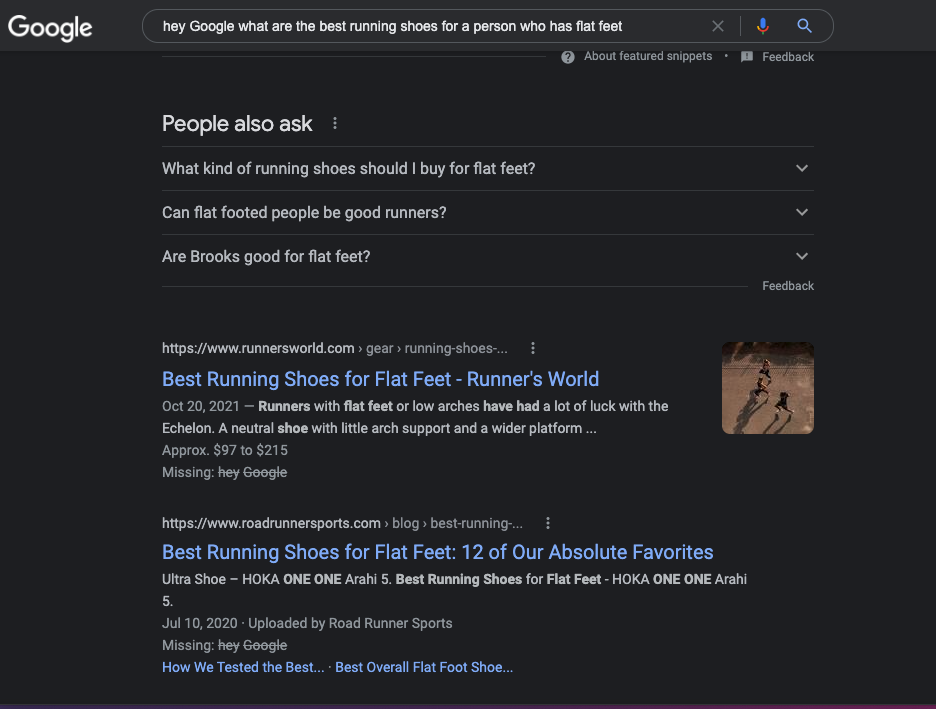 Here you can see the results for the voice-to-text search for “Hey Google What are the best running shoes for a person who has flat feet?”
Here you can see the results for the voice-to-text search for “Hey Google What are the best running shoes for a person who has flat feet?” 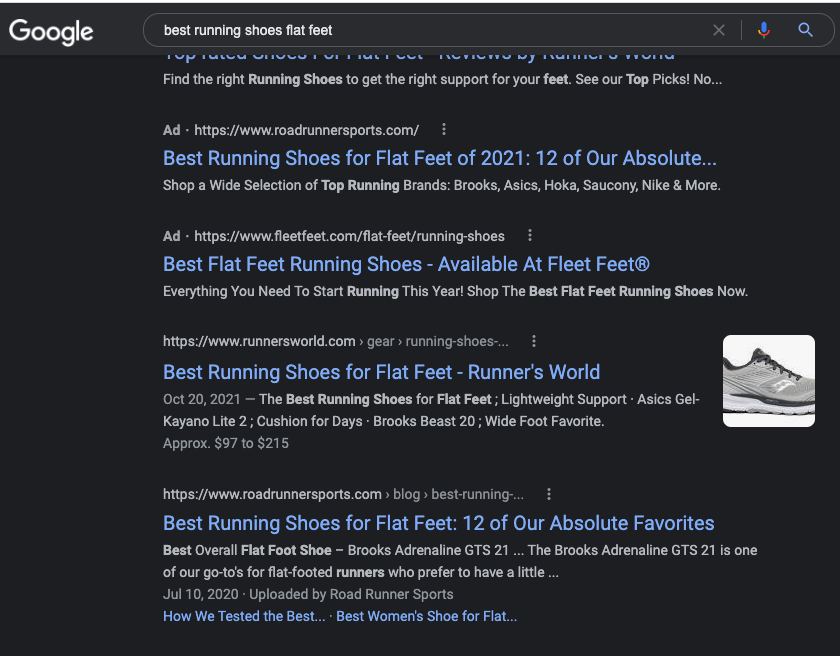 Here is the written search for “Best running shoes flat feet.” Note that while the placement of the “People Also Ask” feature is slightly different, the top organic results remain the same.
Here is the written search for “Best running shoes flat feet.” Note that while the placement of the “People Also Ask” feature is slightly different, the top organic results remain the same. So, even if someone uses the longer, more natural language query it's still important to know that people are searching for queries like “best running shoes flat feet.”
Note: This doesn’t mean you are going to highly optimize a webpage for the exact phrase “best running shoes flat feet.” The phrase “best running shoes flat feet” gets significant search volume. To capture search traffic for search terms with the same intent, create a helpful resource that tells people what the best running shoes are for runners with flat feet.
How to Do Keyword Research
Keyword research for search engine optimization (SEO) consists of gathering all possible variants of keywords that might be relevant to your current site, content, products, services, and ideal customers.
After you build your list of keywords, trim it down to terms that are truly relevant for your site and users. Finally, sort, group, and prioritize each term.
Brainstorm Your Keywords
Getting team members, clients, your content team, and others involved in the keyword brainstorming process can generate even more relevant keywords.
In other words: the more brainpower, the better.
Involving these parties in the process will also increase stakeholder approval of the keyword research process. Hold short brainstorming sessions with stakeholders to determine what they think might be useful based on their understanding of their website.
Step one of your SEO keyword research is simply amassing your initial list. There are numerous sources for possible lists of keywords. For this example, we’ll use our Keyword Overview tool to take a look at “Best televisions.”
When I am building the initial list, attempt to capture the following information for each keyword:
The exact keyword Monthly search volume Keyword difficulty Competitiveness CPC Top 10+ ranking results for this keyword Search intentSo, let’s take a look at what the Keyword Overview tool had to say:
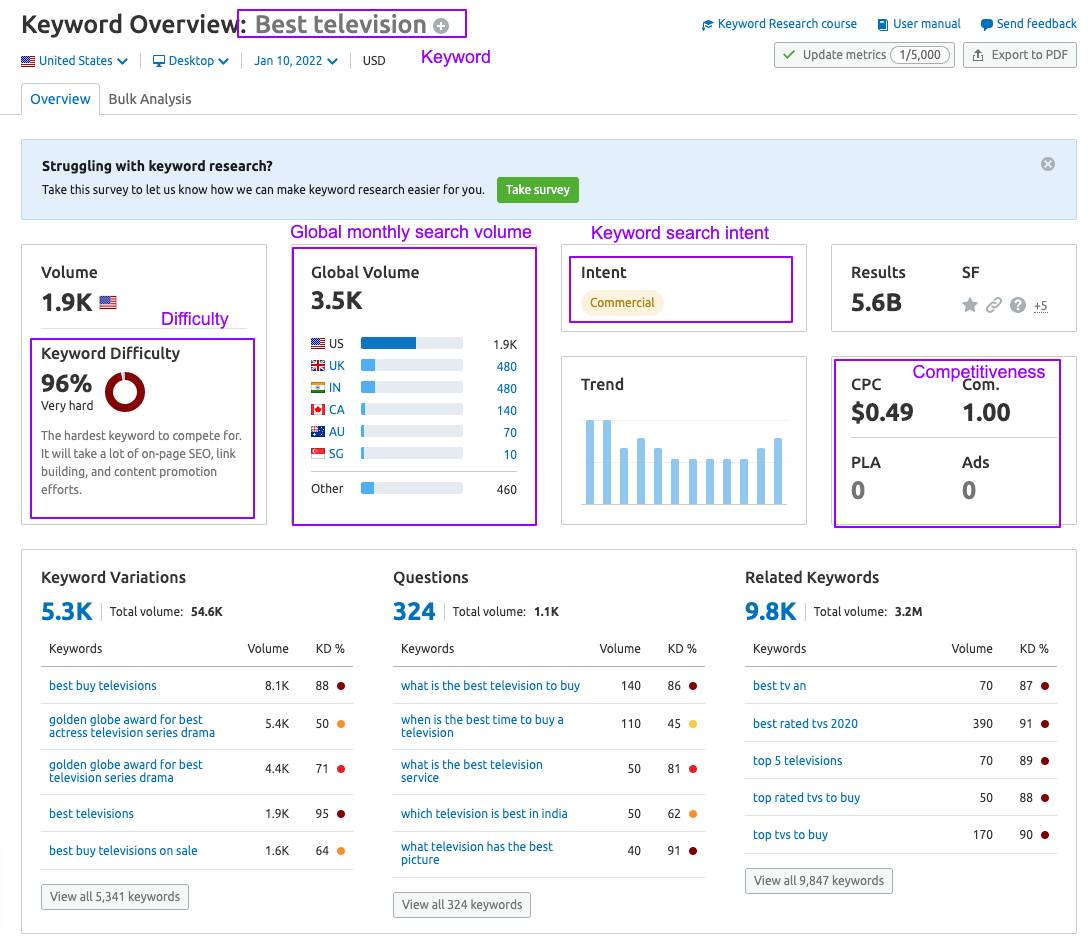 This is the Keyword Overview tool’s insights into the keyword “Best television.” Note that it has all of the information we need to draw our initial set of conclusions about this keyword. To get the SERP rankings we just have to scroll down the page a bit (second image below).
This is the Keyword Overview tool’s insights into the keyword “Best television.” Note that it has all of the information we need to draw our initial set of conclusions about this keyword. To get the SERP rankings we just have to scroll down the page a bit (second image below). 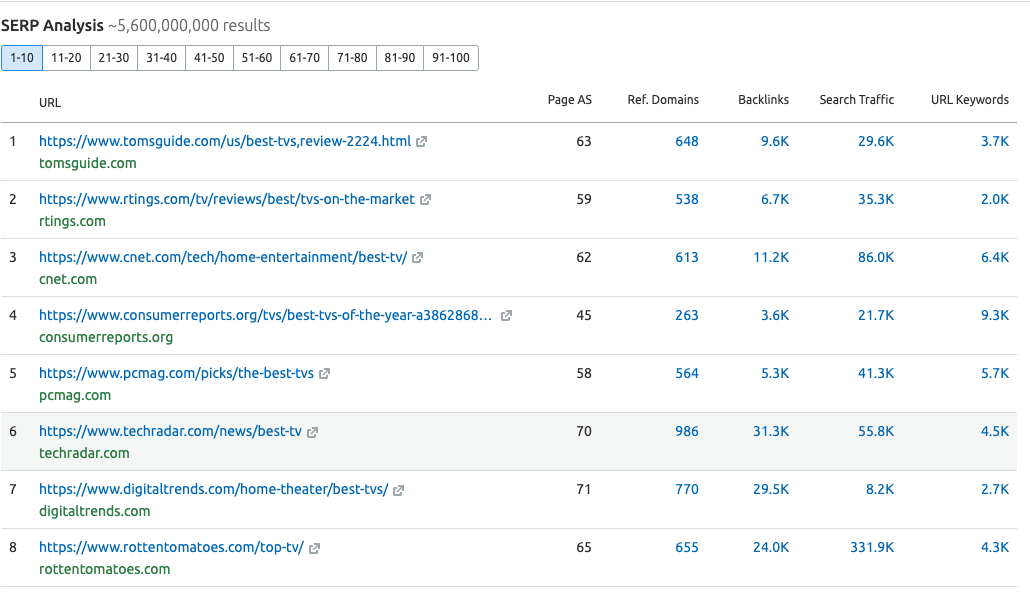 The SERP Analysis from the Keyword Overview tool.
The SERP Analysis from the Keyword Overview tool. Note: The Keyword Overview tool also shows you related keywords, questions searchers are forming around your selected keyword and other insights that will likely be useful down the road.
Business Discovery
The first step in beginning any new keyword research project should be to understand what the business/stakeholder offers. This step is critical if you are an outside consultant or agency because you will likely never understand the business or its customers like those who deal with them daily.
Suppose you are an in-house SEO doing keyword research for a new business or division you haven’t worked with before. In that case, you must understand the products or services offered and, more importantly, the needs and pain points of current stakeholders, both users/customers and internal stakeholders.
Without this understanding, you might not be able to generate a comprehensive list of keywords nor evaluate whether those keywords are relevant and essential.
Here are some ideas for initial keyword discovery:
Spend at least a couple of hours exploring and using the website and make notes of keywords that may be important. Send an initial “SEO keyword discovery questionnaire” to the client or main stakeholder asking for information like: List of business objectives. Is there any seasonality to your business or traffic? Do product/service offerings, or does the site content change seasonally? List what you believe are your most important keywords for your business goals. Are you launching or discontinuing new categories of products, services, or content soon? List your target audiences. List your main competitors. What geo-locations do you operate in? Consider interviewing marketing managers, salespeople, product specialists, or even potential customers to understand how people refer to a product or service and what problems customers are trying to solve by visiting the site.User/Searcher Personas
At this point, you may not have user personas built already. That’s okay! There are plenty of tools out there that help you create these profiles. Let’s take a look at our free Personas tool as an example.
With this tool, you can build custom persona profiles for all of your possible prospective customers/clients.
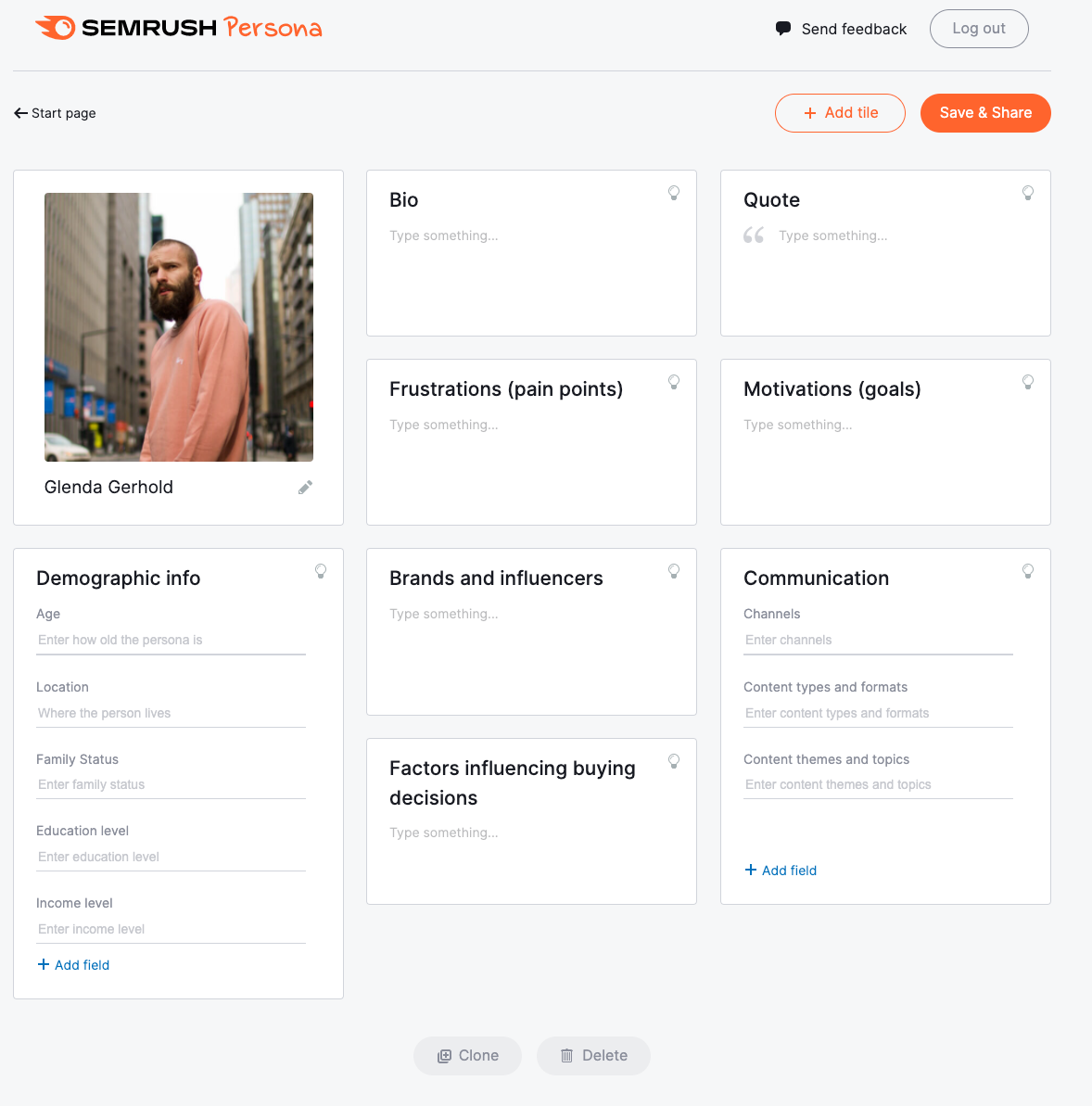 The Semrush Persona tool
The Semrush Persona toolOur Persona tool asks questions that prompt you to consider what type of person you are looking to target with your keyword research. You can fill out as many or as few of the informational columns in the profile you create as you like.
However, the more information you have (especially around customer pain points and factors influencing buyer decisions), the more likely you are to eager future customers with your research.
You can save and share these profiles with your team to ensure that everyone understands your clientele and their needs.
To learn more about building the right kind of personas, read our article on creating buyer personas.
Current Keyword Lists
Once you’ve brainstormed a list of keywords you’ll want to keep them in an organized and easily accessible place. Using our Keyword Manager tool as an example, here is how you would go about keeping track of your keywords.
1. Open the Keyword Manager tool and name your keyword list
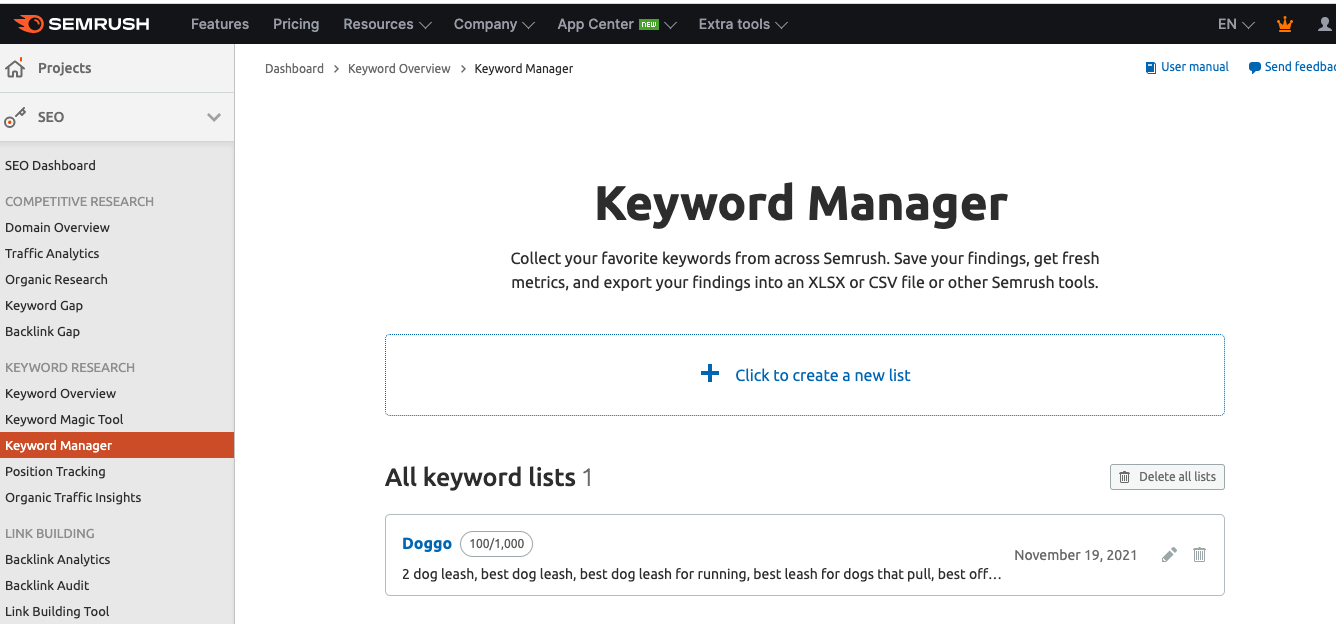 On the first Keyword Manager page you’ll click the blue “+” to name your keyword list.
On the first Keyword Manager page you’ll click the blue “+” to name your keyword list. 2. Once your keyword list is named and appears under “All keyword lists,” click on it. You’ll be prompted to select how you would like to import keywords to this list. As an example, let’s say you chose the option to manually input your keywords. Once you have them all in you’ll hit “Add keywords”
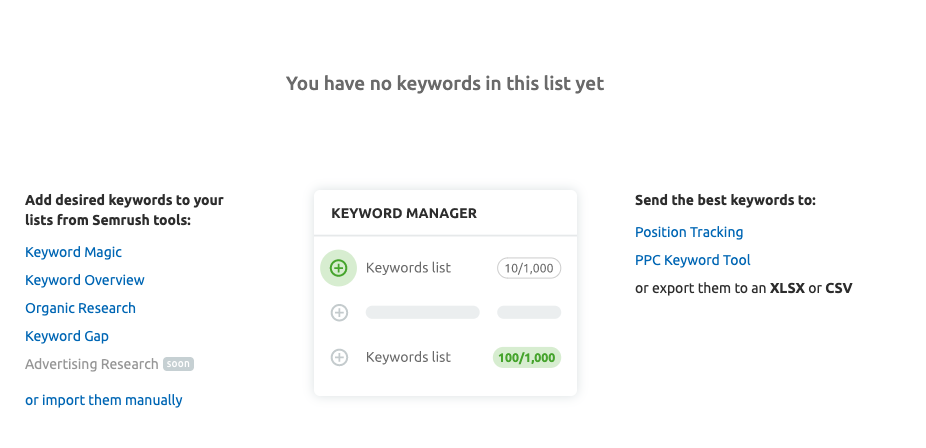 The Keyword Manager tool will prompt you to select an import option for your keywords.
The Keyword Manager tool will prompt you to select an import option for your keywords. 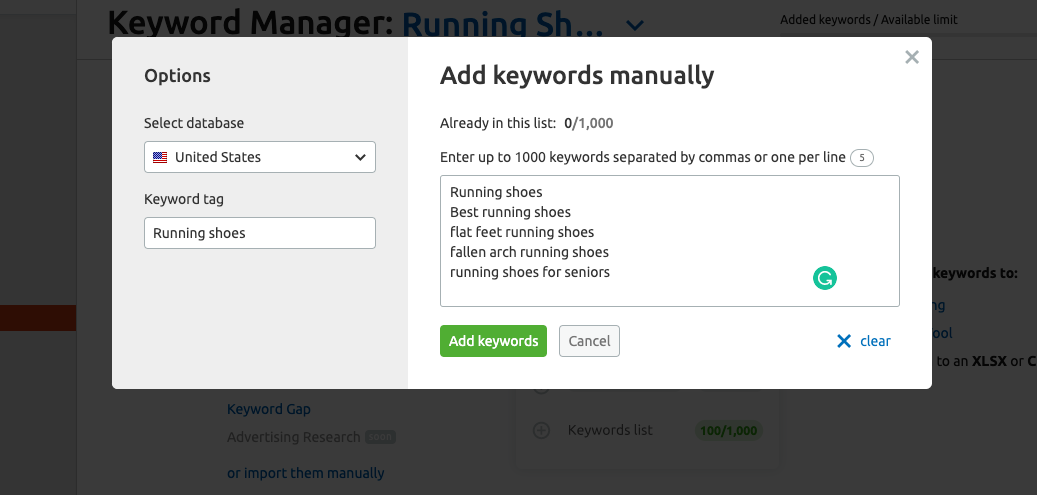 When you select “Add keywords manually” there will be a pop-up box where you can add up to 1,000 keywords to your list.
When you select “Add keywords manually” there will be a pop-up box where you can add up to 1,000 keywords to your list. 3. Your list might take a few moments to generate. Once it does, you’ll be taken to the overview of your list in the Keyword Manager tool
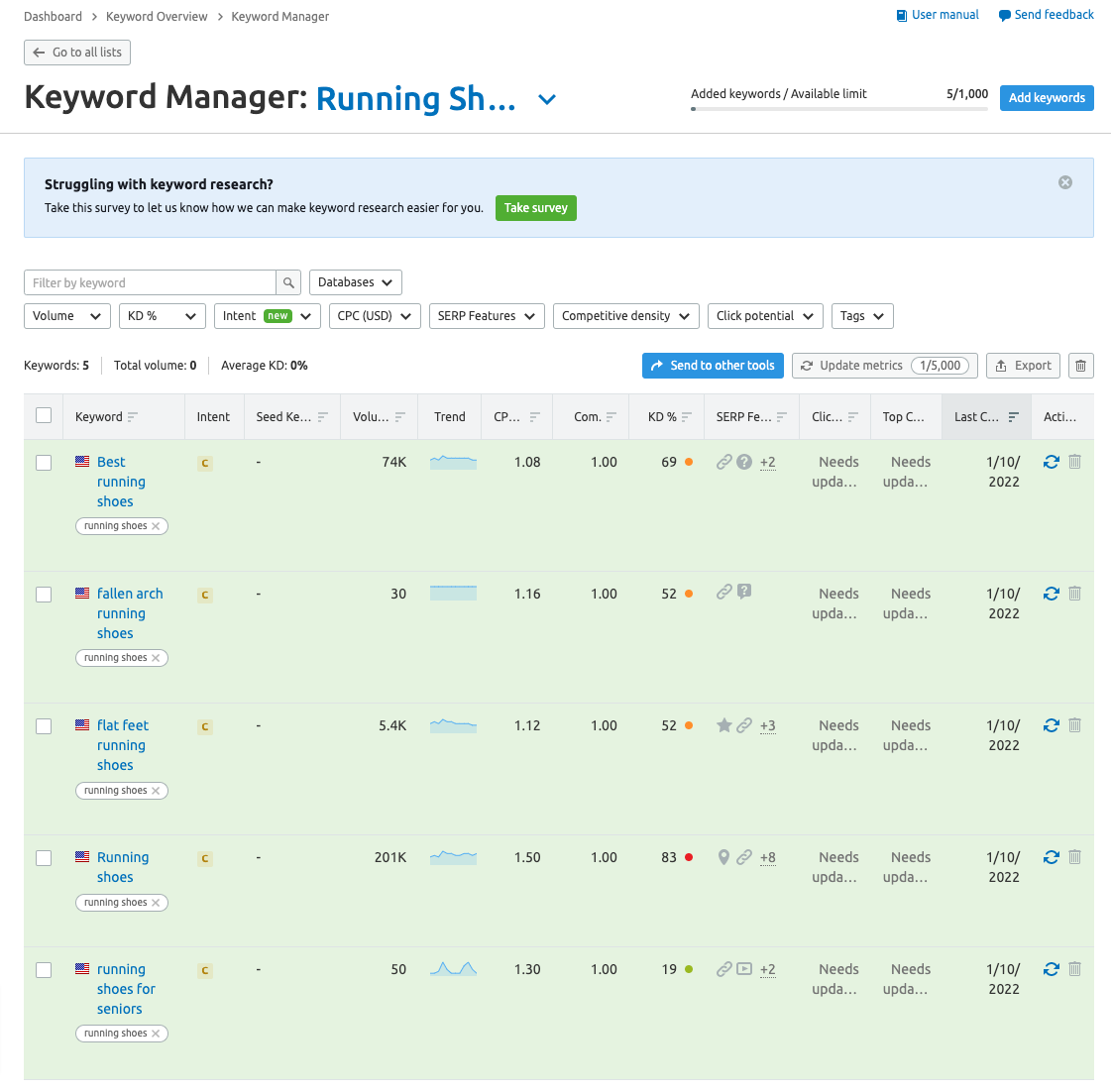 The Keyword Manager tool keeps all of your campaign/related keywords in a list that is easy to add to and export to other tools. You can keep track of metrics like volume, competitiveness, keyword difficulty, search intent, and more.
The Keyword Manager tool keeps all of your campaign/related keywords in a list that is easy to add to and export to other tools. You can keep track of metrics like volume, competitiveness, keyword difficulty, search intent, and more. Using a tool, Excel sheet, or other tracking system is an essential part of keyword research. Grouping keywords together and keeping track of their volume and difficulty can make the work of building content clusters that much easier down the road.
Generating Organic Keyword Ideas from Your Website(s)
In addition to the sources above, which can tell you the keywords that are already driving organic traffic to your site, there are additional tools that can recommend new keywords based on a website and content analysis. And others can show you the entire universe of keywords your site is currently ranking for, and whether or not they are driving traffic. Let’s look at a few.
9 Keyword Research Tools
Here are some of the best keyword research tools to help you get started:
1. Semrush—Keyword Overview: The Keyword Overview report offers plenty of data around a single keyword and indicates “keyword variations” and “related” keywords.
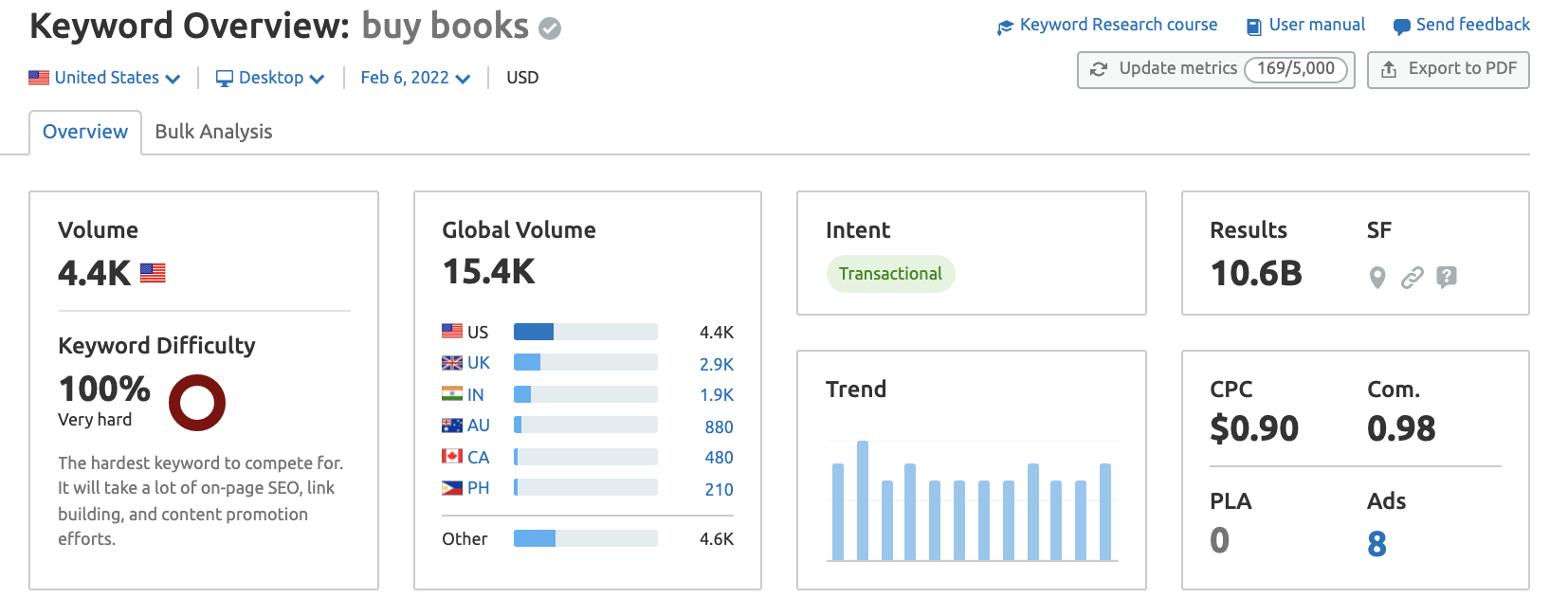
2. Semrush—Topic Research tool: The Topic Research tool returns a massive set of related topics and concepts in different formats based on a particular keyword.

3. Google Ads: Google Ads provides ample keyword information and variations of keywords that may be relevant for you. As previously stated, you aren’t going to get good data unless you’re using a Google Ads account that spends a reasonable amount of money.
4. People Also Ask—Google: Another method you can use to find related questions for a particular keyword is to search for that keyword in Google and look for the “People also ask” section. This section will give you popular keyword queries related to your keyword that people are also searching for.
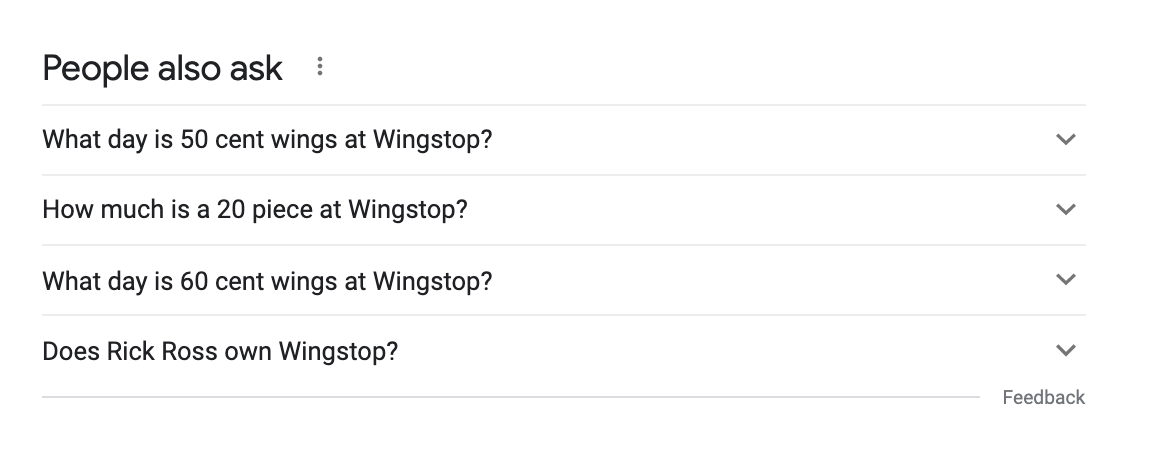
5. Related Searches—Google: Believe it or not, scrolling to the bottom of the Google page can be helpful! You can find a list of “related searches” at the bottom of each SERP. You can also feed these keywords back into the other keyword tools to find more keyword variations.
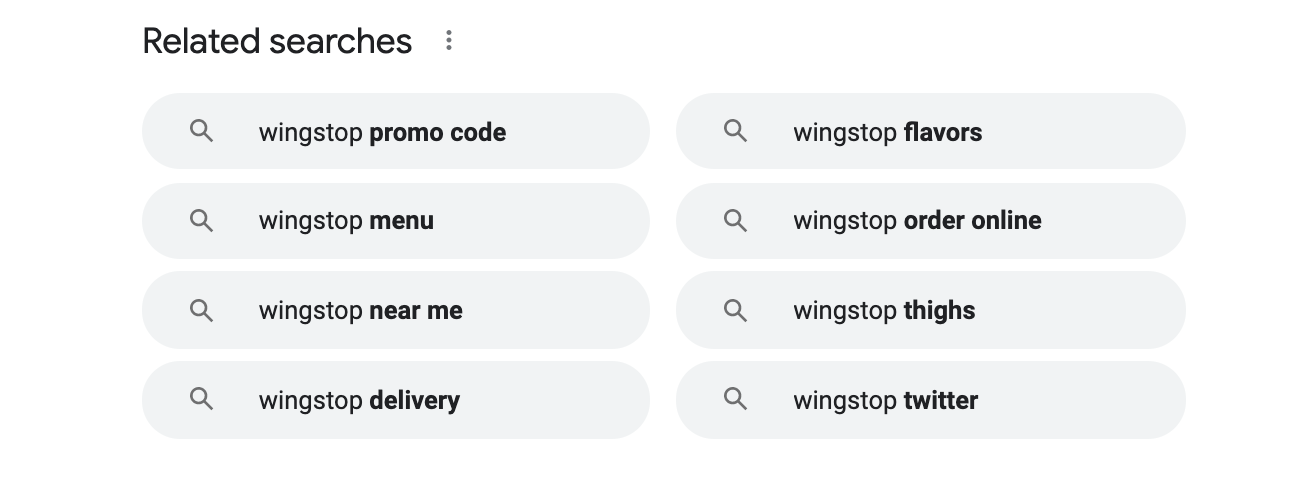
6. Google Trends: Google Trends can be an excellent source for monitoring and tracking changes in search engine volume for keywords over time. It also gives you a set of related queries that you can then iterate on to get more ideas to build out your keyword list.
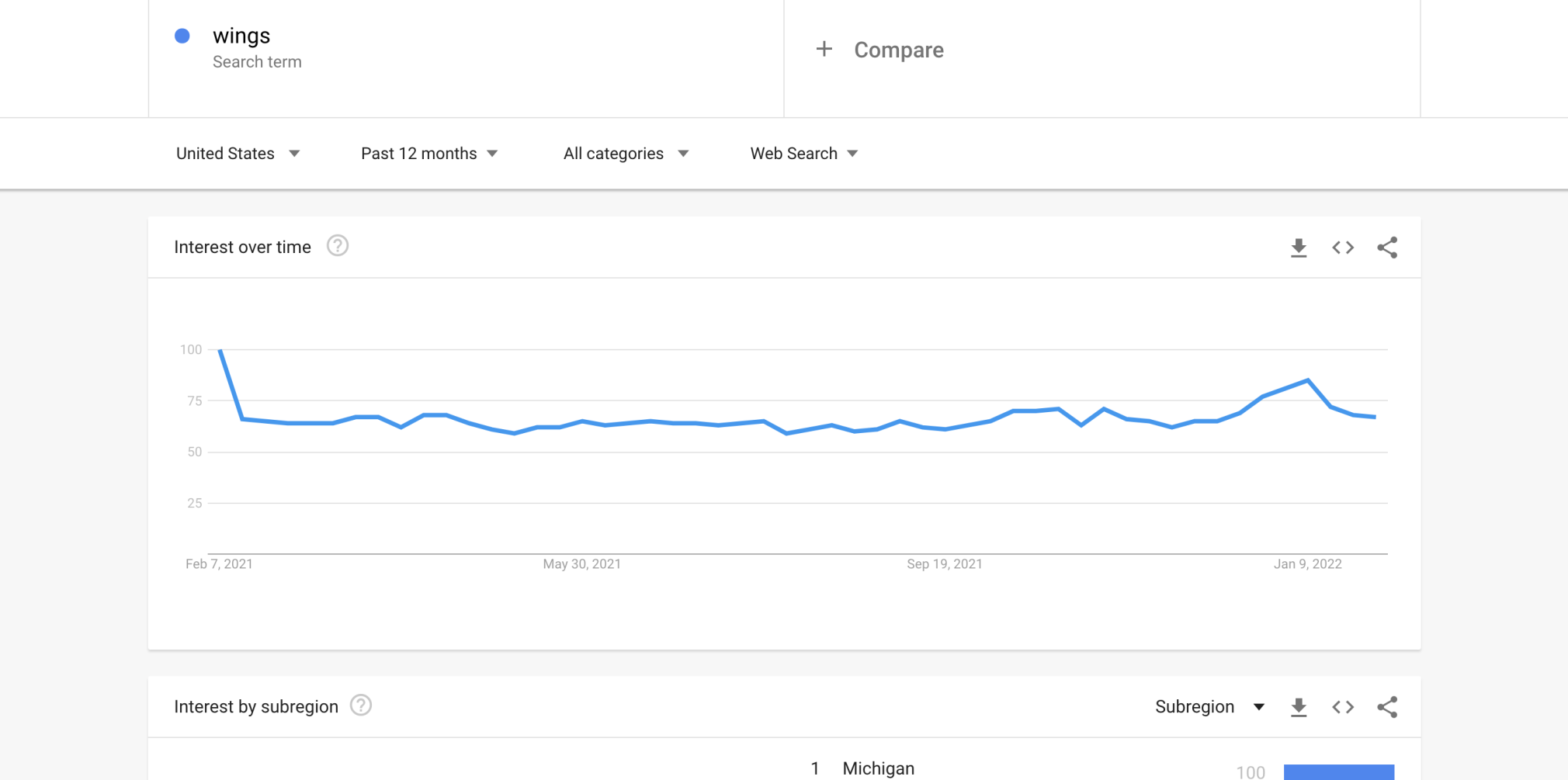
7. Answer the Public: Answer The Public generates questions and phrases asked around a particular root keyword.
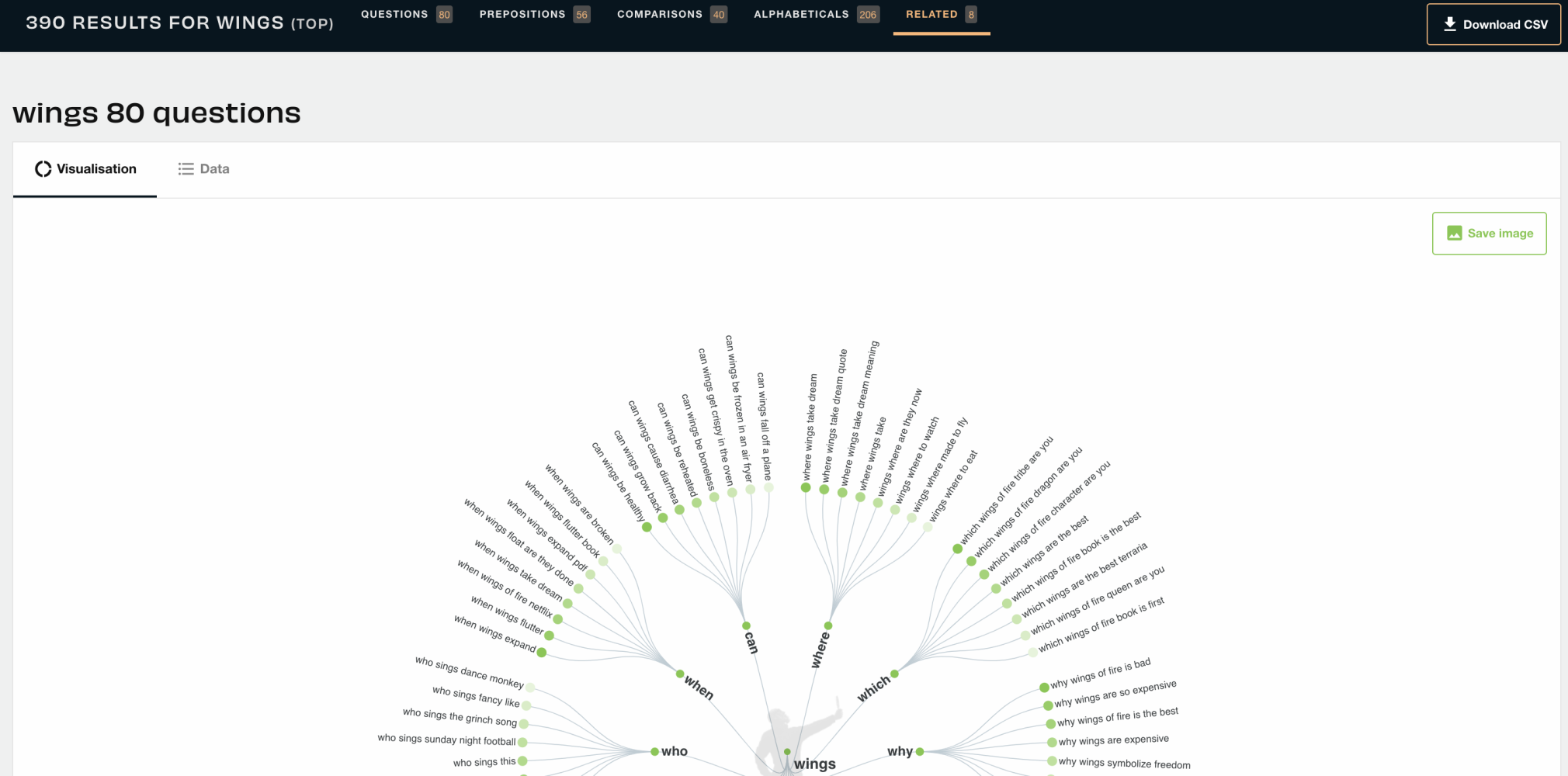
8. Soovle: Soovle will generate a quick list of top terms for Wikipedia, Google, Amazon, answers.com, YouTube, Bing, and Yahoo!

9. Keywords Everywhere: Keywords Everywhere is a browser extension for Chrome or Firefox that pulls search volume, CPC, and competition data on the fly.
Geolocating Keyword Research (for Local or Regional Sites)
Most keyword research tools will return either global search volumes or search volumes for a particular country by default. If you are interested in multiple countries, you may merge various keyword data sets. If you are interested in data for a particular city, state, province, territory, etc., many keyword research tools cannot get down to that granular level.
Suppose your keyword research is for a business that can only operate in a particular state. You’ll want to get an accurate picture of the total search volume available. In that case, you really should be limiting that search volume geographically.
Google Ads can once again help here. For example, if you’re working with a law firm that only operates in San Francisco and targets “personal injury lawyer,” use Google Ads Planner location data to determine how much traffic your client could capture.
Conversely, suppose the search term is “personal injury lawyer in San Francisco.” Here, you can likely reference the term’s national search volume because the intent of anyone searching for that term “matches” your client.
In the example below, the search location is limited to the San Francisco/Oakland/San Jose Nielsen DMA region. Google will also tell you how many people are within that region. In this case, 19.9 million:
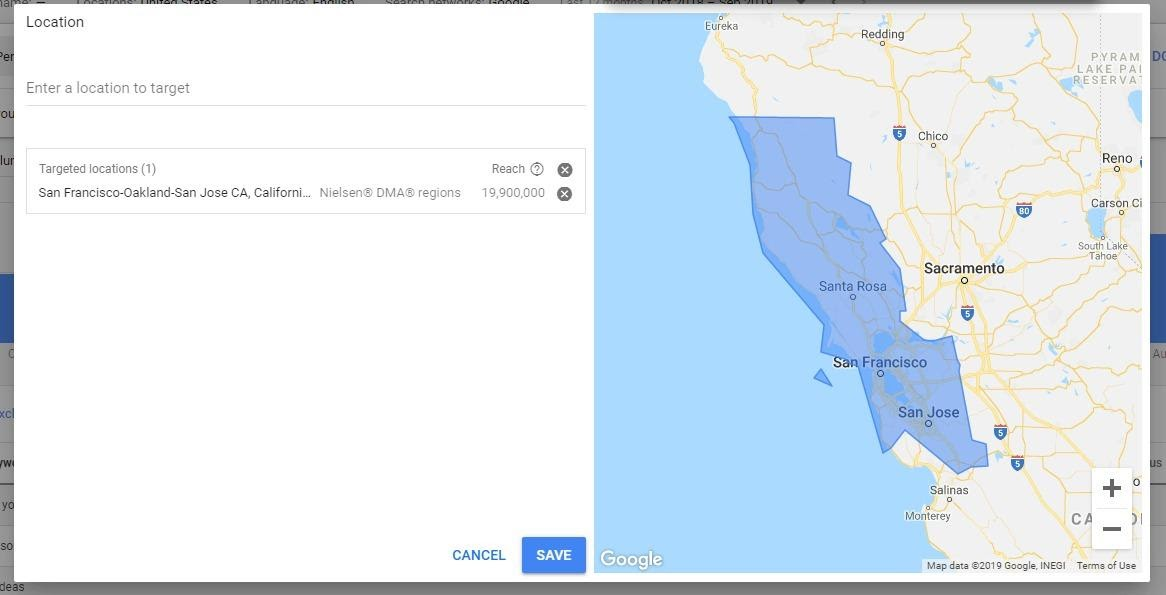
Once the location has been set to target, select the ‘Historical Metrics’ tab. Here you can see the search volume for the keyword(s) in the chosen location. In this instance, “personal injury lawyer” in the San Francisco region has an average volume of 1,900 searches per month:
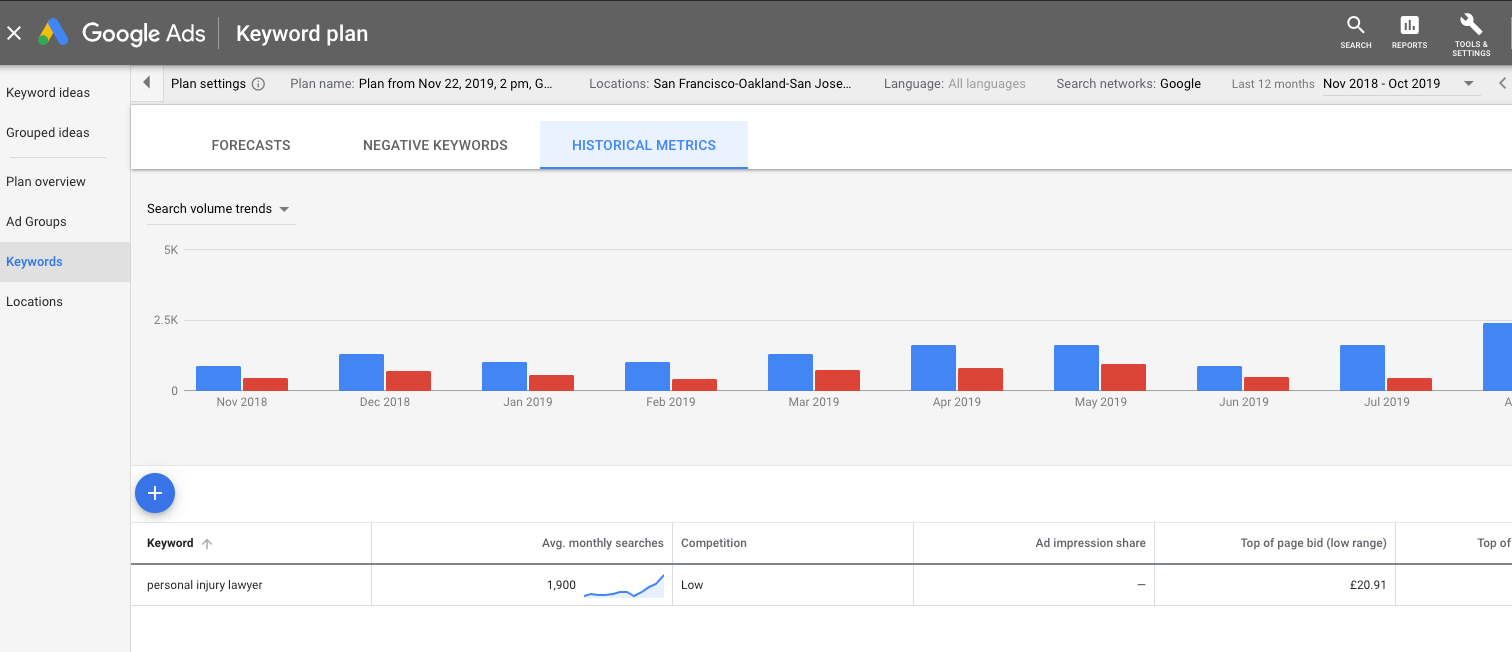
Choosing Your Organic Keywords
Once you have your initial list of keywords organized, the next step is to choose your keywords based on certain metrics like search volume, competition, any recent trends, and business relevancy.
You can use these metrics to determine which keywords to discard. These will be keywords you don’t plan on using in your content or don’t want to rank for.
In the Keyword Manager tool, you can opt to delete keywords from your list that are irrelevant:
 We have selected “Fallen arch running shoes” as a keyword we no longer want to target. We have chosen the check box to the left. When you click the little trashcan to the right, the option will pop up to delete all of the keywords on our list or just the one selected.
We have selected “Fallen arch running shoes” as a keyword we no longer want to target. We have chosen the check box to the left. When you click the little trashcan to the right, the option will pop up to delete all of the keywords on our list or just the one selected. Search Volume
Keyword search volume refers to the number of times a specific keyword is searched for in a specific time frame. This metric can help you determine how competitive a keyword is.
Plenty of tools in the Semrush Keyword Research suite display each keyword’s volume—look for the “Volume” column. For an in-depth look at a keyword’s search volume, use the Keyword Overview tool. The Keyword Overview tool can show you a keyword’s localized and global volumes:
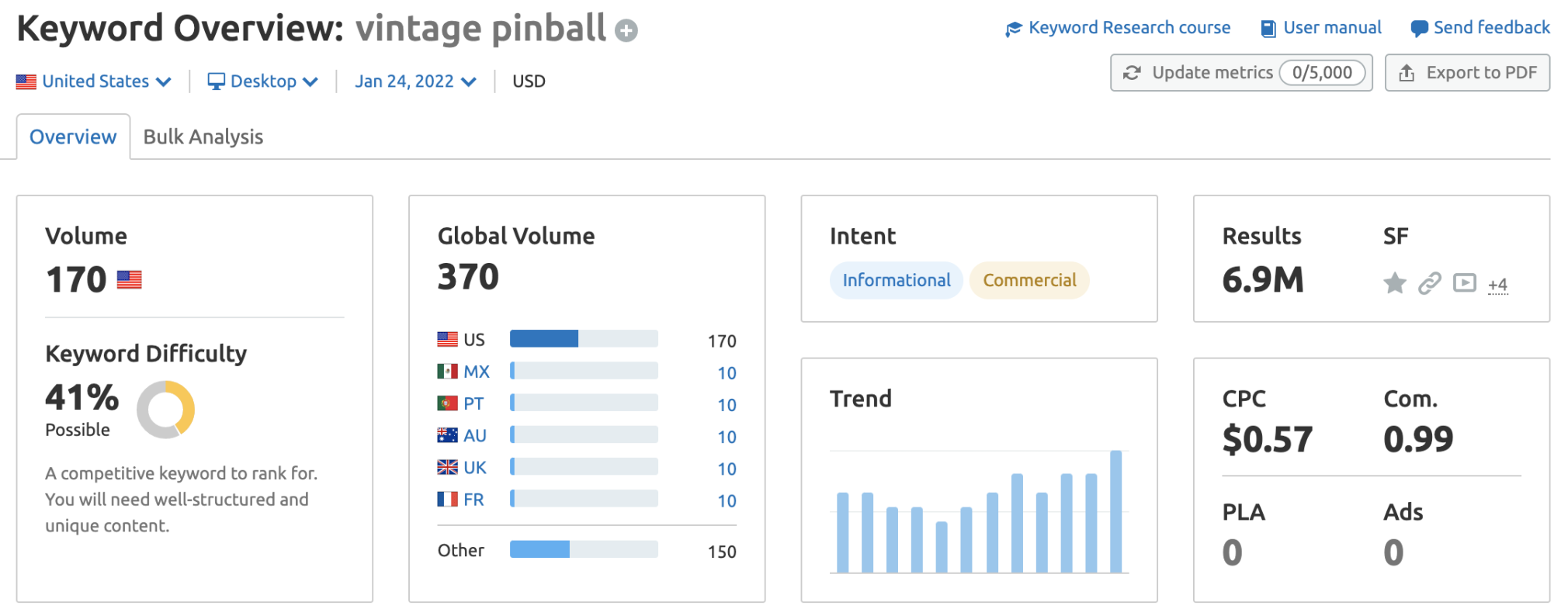
To learn more, check out our beginner’s guide to keyword search volume.
Competition
Keyword competition measures how difficult it will be to rank organically for your target keyword. A keyword's competitiveness depends largely on its related market or nice and its popularity.
Determining a keyword’s competition can save you much time and effort in the long run. A less competitive keyword will be easier to target and rank for than a more competitive one. If a keyword is more competitive, you may need more time or resources to rank for it, so consider deprioritizing it or developing a long-term plan to target it.
There’s no one set way to determine a keyword's competitiveness. The Semrush tool offers two metrics that can help you review competition levels on the fly:
The Keyword Difficulty column indicates how hard it would be for a website to rank organically in the Google top 10 for the analyzed keyword. The higher the percentage, the harder it will be to achieve high rankings. The Competitive Density column showcases the level of competition between advertisers bidding on a given keyword within their PPC campaigns. Competitive Density is shown on a scale from 0 to 1.00 with 1.00 being the most difficult to rank for.You can see these two metrics across different tools in the Keyword Research suite. Here, we can spot them in the Keyword Magic tool:
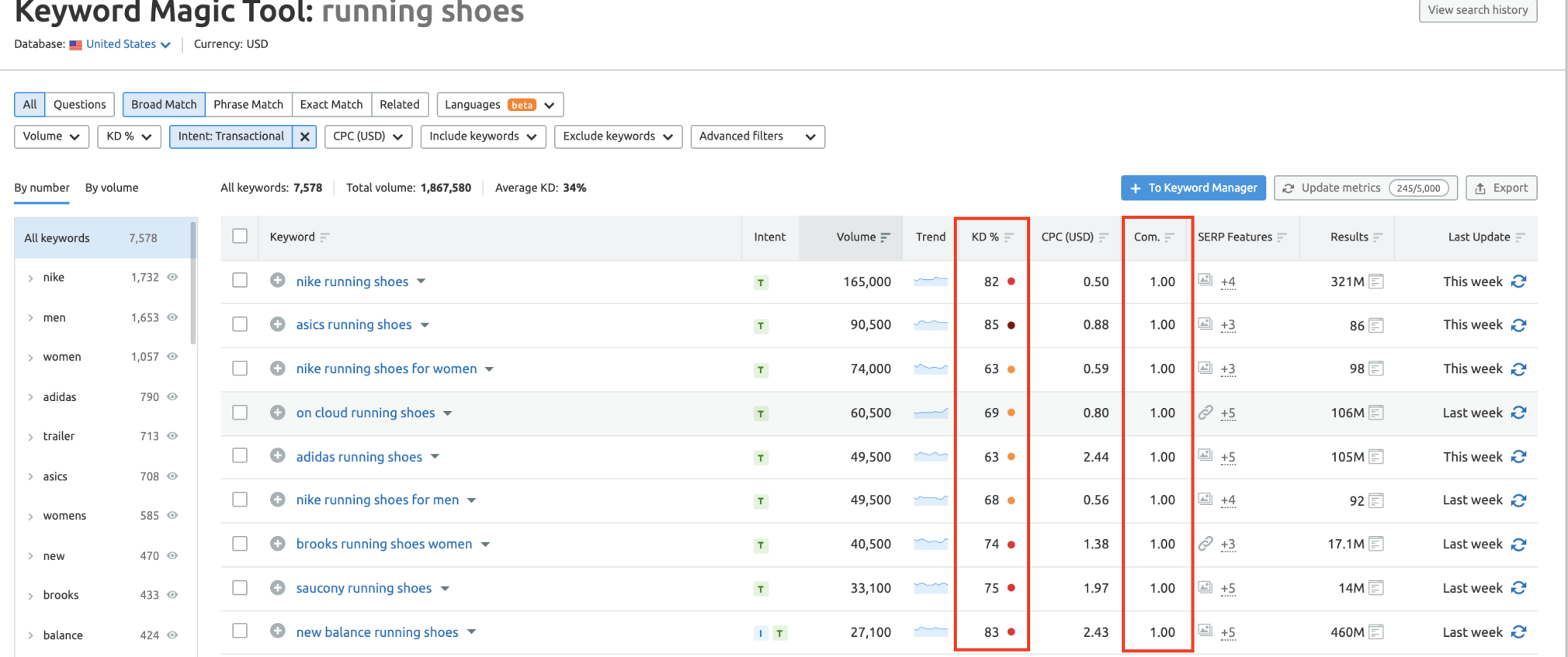
Trends
When evaluating a keyword, consider any upward or downward trends for that keyword over the past few months. Keyword trends can help you determine how popular the keyword has been recently—sometimes within the past 3-12 months.
It’s common for certain keywords to become more or less popular over the year. For example, keywords related to Halloween—like “Halloween candy”—are much more likely to receive more queries during the fall than in other seasons.
In the Keyword Overview tool, we can see that searches for this keyword trend upward towards the end of the year, especially around the month of October:
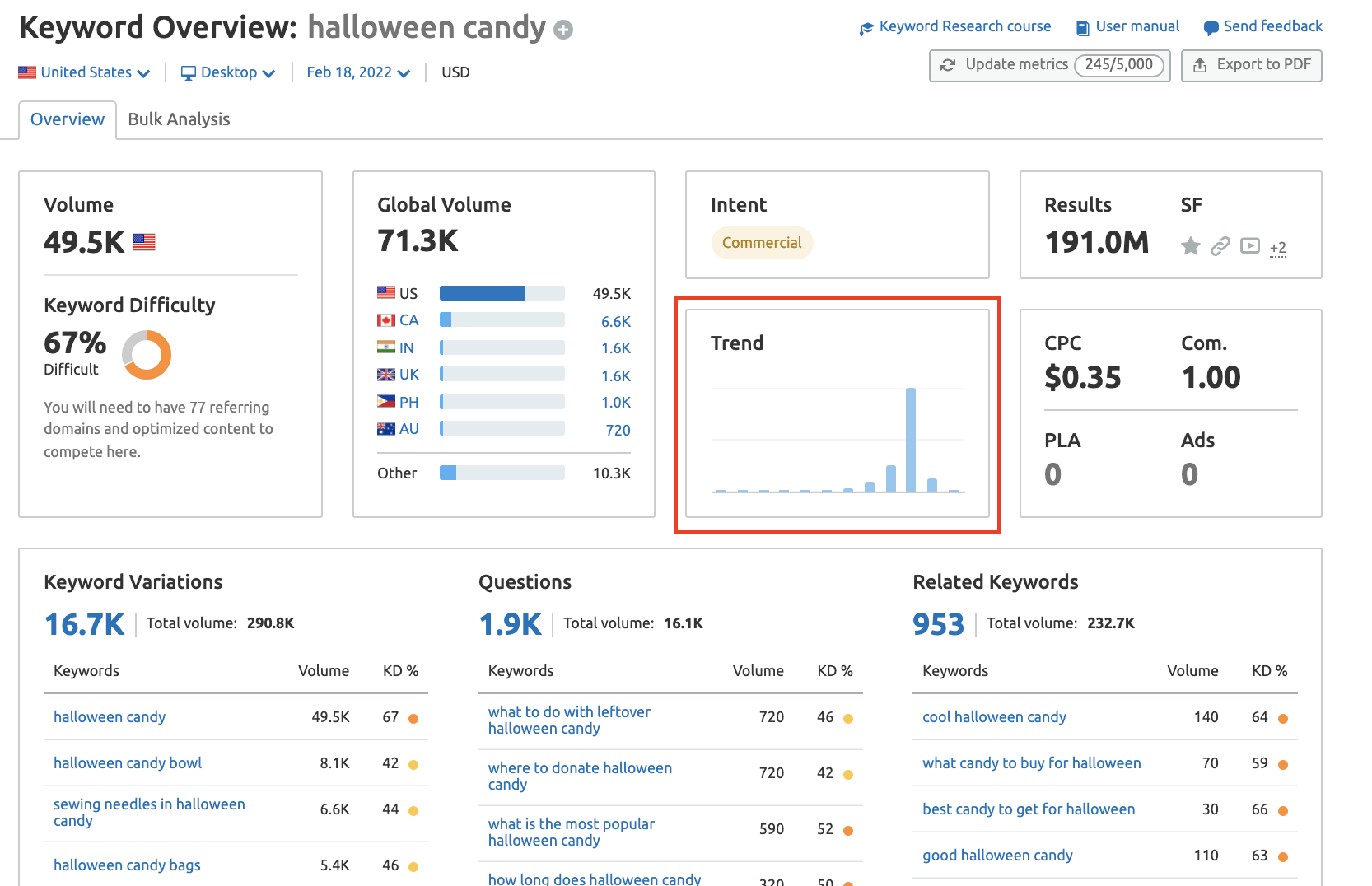
In Semrush, the trend metric shows keyword trends over the last 12 months. Use this widget to track how a keyword trends over the year to better understand when or if you should target it.
Relevancy to Business
Ranking for keywords is important, but you shouldn’t aim to rank for every keyword. Focus on selecting keywords within your market niche that are most relevant to your business.
Let’s use our example San Diego law firm from above. As a law firm, it’s important to target keywords related to law firms. However, keywords related to criminal or tax law won’t be as useful to our law firm, since they focus on personal injury law.
One way you can evaluate business relevancy is with your user personas. Evaluate each keyword mentally to determine whether it solves a need or answers the questions of a potential user.
For more examples of how to create in-depth buyer personas, check out 5 Buyer Personas That Go Beyond the Basics.
How Many Terms Should I Have in My Organic Keyword Research List?
The answer to how many terms you should have in your initial list is a typical SEO answer, “it depends.”
In part, it will depend on the resources you use to analyze the list.
It will also depend on the nature of the keywords themselves. You won’t always know how many keywords will be relevant for your site when starting your project. It could be 200 keywords or 20,000 keywords.
Just know that, in order of importance, the quality of the keywords far outweighs the volume of keywords.
Classifying Keywords
Once you have an approved list of keywords, you need to start putting some sort of relative value against those keywords beyond just what their search query volume is.
Lower volume keywords might be keywords you create content for first—especially if the lower volume keyword is far more relevant or more likely to lead to a conversion.
Remember: not all relevant keywords are created equal.
It’s also good to remember that keyword optimization is changing. It is no longer necessary to only do one to two keywords per page. This is because there’s no such thing as separately writing “for Google” and “for the user” these days—they’re one and the same.
Categorize keywords into related themes and groups. Look for the largest and most significant opportunities and consider groups of related keywords for which one piece of content may be able to rank. These keywords can be optimized quickly and result in easy wins for you (and for your clients).
Prioritize Your Keywords
In the Keyword Manager tool, you can filter keywords in your list based on several factors.
For example, let’s say that you’re invested in targeting commercial or transactional keywords—that is, keywords that customers use when they’re ready to make their purchase. Fortunately, there is a filtering option to narrow your list down to just those keywords with the search intent metric.
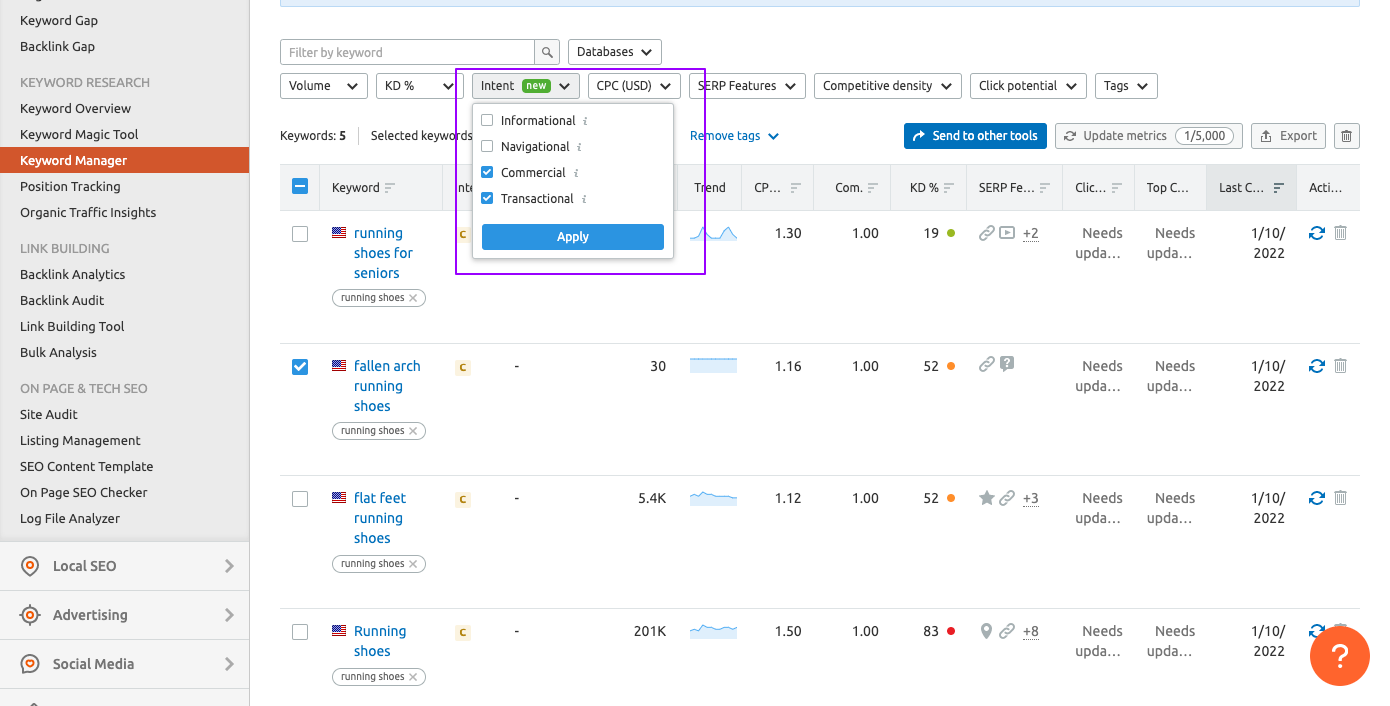 The Keyword Manager tool allows you to filter by a number of metrics, including search intent (as shown).
The Keyword Manager tool allows you to filter by a number of metrics, including search intent (as shown). Once you have your prioritized list, you can export the data to Excel. To get more prioritization tactics, check out our article on keyword strategy.
Competition (KW difficulty, SERP competition, SERP intent)
The level of competition and how likely your site will rank for a keyword are two metrics of success to consider while prioritizing your keywords. You can use quantitative metrics from keyword research tools for this, like keyword difficulty, competition, competitive density, etc.
Generally, the higher the number, the more difficult it will be to rank on that term. All other things being equal, keywords with lower competition may be higher priority than keywords that are difficult to rank for.
Tool Metrics vs. Competitors
You should also consider the level of competition in the actual search engine results pages and determine the intent which Google infers from the keywords.
For example, let’s say your site is tiny and new. If a keyword has a low competitiveness score, but the sites ranking for the word are huge, multinational sites with massive amounts of links, you’ll probably want to deprioritize that keyword.
Intent
Searcher intent, as Google understands it, is also critical. Take the search term “running shoes.” A quick look at Google search results shows local stores selling running shoes. 19 of the top 20 results are ecommerce sites.
We can conclude that when someone searches for “running shoes,” Google thinks they are looking for a place to buy them. If you are a content-based site, this may mean that “running shoes” is less of a priority for you.
Cost-Per-Click
Though used as a PPC metric, cost per click can help you determine the importance of your organic keywords (to an extent). The higher the average bid on a term, the more people believe it will lead to a conversion.
Or, it may have some other value, such as brand awareness or demand generation, to the company bidding on it. You can use just one signal to infer the relative “value” of the keyword.
Relevance
Relevance is a metric based on judgment. Having a thorough understanding of the business or site, its users, its goals, etc., should give you some insight into how relevant a term is to the site. If you’ve been detailed about your keyword research so far, you should be in an excellent position to judge relevance.
Position in Keyword Research / Purchase Funnel
In addition to the “importance” of a keyword, you need to determine where they are in the purchase or conversion funnel. This information will be helpful when communicating with departments and stakeholders or when determining the strategy for ranking those keywords.
In a simple model of the keyword funnel, keywords could fall into the categories:
Awareness Consideration ConversionThe first bucket is terms about getting general awareness about a product or service or answering questions for users that may be helpful for them. These terms will be directly related to your products, services, or content.
The second bucket, “consideration,” is where they start to refine product categories, compare products, etc.
The final bucket, “conversion,” is for users that already know they want your product or service and need further information in order to complete the sale.
Evaluating Organic Keyword Opportunities
You can look for and evaluate keyword opportunities through our Keyword Gap tool. This tool allows you to enter up to five competitors’ sites. It indicates which sites have overlapping keywords and possible opportunities for you to create keyword-optimized content your competitors haven’t created.
For example, let’s say you or your client run a major retailer site. You want to see how a keyword on your list, “Running shoes,” is used across your competitor’s sites. You also want to see if there are any other related keywords you can use to stand out from the competition.
With the Keyword Gap tool, you can do all of that. When you filter by keyword, you get a glimpse of the competitor’s search landscape for your chosen search term.
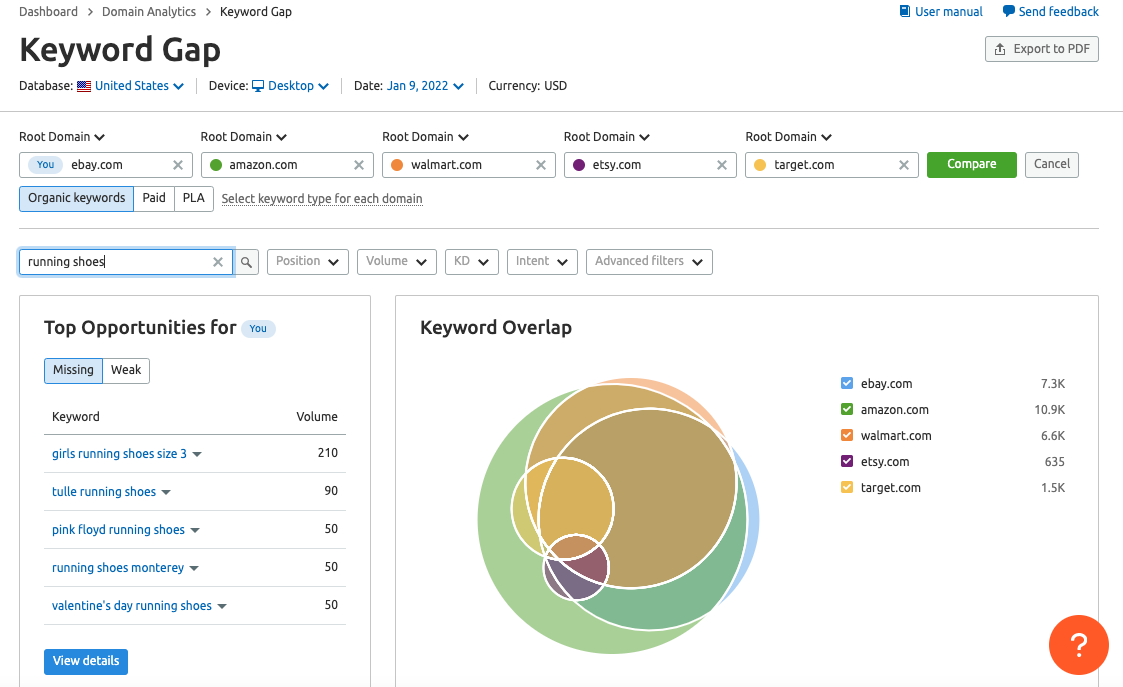 The Keyword Gap tool shows a handy Venn diagram that demonstrates how our selected keyword “Running shoes” is being used across our competitors’ sites.
The Keyword Gap tool shows a handy Venn diagram that demonstrates how our selected keyword “Running shoes” is being used across our competitors’ sites. Generally speaking, good organic keywords have a solid mixture of high volume, relevance, and low keyword difficulty.
If our competitors use “running shoes” often and it’s highly relevant for their site, it might be best to find a related term with lower volume to include in our keyword list.
Final Thoughts + Key Takeaways
When done right, keyword research can help produce highly targeted content that engages readers and leads to more conversions.
Related articles
For further reading on this topic, we suggest checking out these articles:
How to do Keyword Research with Semrush Keyword Magic tool How to Use Semrush for Keyword Research How to Use Google Trends to Compare Search Terms Four Types of Keywords (and Why They Matter) A Beginner’s Guide to Keyword Search Volume How to Search for Keywords for Your Business Volume Update! Why Semrush Search Volume Is the Most Accurate on the Market (Study)Innovative SEO services
SEO is a patience game; no secret there. We`ll work with you to develop a Search strategy focused on producing increased traffic rankings in as early as 3-months.
A proven Allinclusive. SEO services for measuring, executing, and optimizing for Search Engine success. We say what we do and do what we say.
Our company as Semrush Agency Partner has designed a search engine optimization service that is both ethical and result-driven. We use the latest tools, strategies, and trends to help you move up in the search engines for the right keywords to get noticed by the right audience.
Today, you can schedule a Discovery call with us about your company needs.
Source:





![How to Find Low-Competition Keywords with Semrush [Super Easy]](https://new.allinclusive.agency/uploads/images/how-to-find-low-competition-keywords-with-semrush-super-easy.svg)